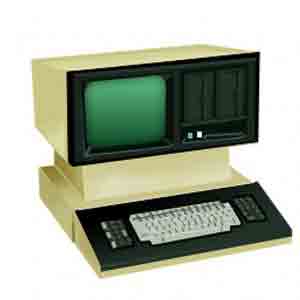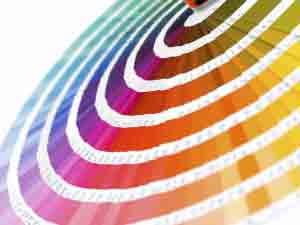Remember when personal computers first started coming into the modern workplace? Almost all of them, regardless of manufacturer, used the same ubiquitous colored plastic case. Called “putty”, it was a generic light brown mixed with off-white, and you would find this same color used for printers and copiers, telephones and filing cabinets and fax machines. Thought to be innocuous and expected to blend in with any decor without showing dirt, it had the effect of being utterly boring and sucking the joy and life out of any room in which it appeared.
manufacturer, used the same ubiquitous colored plastic case. Called “putty”, it was a generic light brown mixed with off-white, and you would find this same color used for printers and copiers, telephones and filing cabinets and fax machines. Thought to be innocuous and expected to blend in with any decor without showing dirt, it had the effect of being utterly boring and sucking the joy and life out of any room in which it appeared.
We are visual creatures and color is essential to how we relate to objects viscerally and emotionally. Think about that when you’re designing a new prototype or finished product. Sure, it must meet the essential mechanical and performance specs, and we can help you to do that in a variety of plastic or metal materials, in virtually any geometry you can imagine. The choice of color may seem superfluous to function, but if it’s a consumer product then the color affects your relationship to the object even on an unconscious level.
 Color theory is an extensive subject on which many volumes have been written, and different cultures throughout time have used color as a signifier for larger philosophical and emotional meaning. Generally in the western world, lighter hues suggest physical lightness and playfulness, especially in yellow and green. Blues are thought to be professional and responsible, purple and deep red are luxurious and expensive – even regal! – whereas green evokes nature and peace. Do you find anymore putty-colored computers on the market? No, they’re usually matte black, glossy white or brushed aluminum these days. People are happier and more productive when the objects around them inspire creativity and engender loyalty rather than boredom.
Color theory is an extensive subject on which many volumes have been written, and different cultures throughout time have used color as a signifier for larger philosophical and emotional meaning. Generally in the western world, lighter hues suggest physical lightness and playfulness, especially in yellow and green. Blues are thought to be professional and responsible, purple and deep red are luxurious and expensive – even regal! – whereas green evokes nature and peace. Do you find anymore putty-colored computers on the market? No, they’re usually matte black, glossy white or brushed aluminum these days. People are happier and more productive when the objects around them inspire creativity and engender loyalty rather than boredom.
For 2015, Pantone® has named Marsala as its Color of the Year. What is Marsala? They describe it as “…a naturally robust and earthy wine red.” Or dried blood, depending on whom you ask. Whatever your response to that particular shade, there is a response, and that’s the point. Color speaks to us, and you should consider it carefully when designing your part. At STAR, we have the full color spectrum of PPG® automotive paints, and along with our Pantone® color matching system we can duplicate almost any paint chip sample you have, or make a custom color to order. How many colors can the human eye detect? Almost 16 million, and don’t even get started on textures. We’ll save that for next time.
Chris Williams is the Content Editor at Michigan CNC Machining Parts, Inc.. He is passionate about writing and about developments in science, manufacturing and related technologies. He is also a certified English grammar snob.




